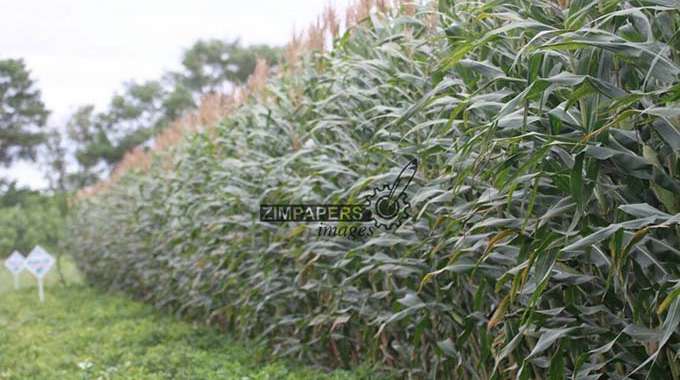Govt targets increased maize yield

Livingstone Marufu Business Reporter
Government is targeting to increase Zimbabwe’s maize yield to five tonnes per hectare from the current average output of 0,9 tonnes through various initiatives aimed at commercialising cereal production.
The move comes at a time when Government is moving towards attaining Africa’s bread basket status.
Giving extension officers Commercial Maize Production Field Guide will be one of the initiatives lined up for large and small holder farmers geared towards ensuring local farmers not only adopt good farming practices, but increase their productivity to above average potential of local hybrids.
At a handing over ceremony of 5 000 Commercial Maize Production Field Guide copies to the Government by Zimbabwe Agricultural Society in Harare yesterday, Lands, Agriculture and Rural Resettlement Deputy Minister Davison Marapira, said the books will empower the extension officers to capacitate farmers to increase productivity on farms.
“The guide published by the Zimbabwe Agricultural Society and authored by John Basera and Langton Mutemeri, aims to provide information that will lead to the attainment of at least five tonnes per hectare of maize. This is from a national maize average yield of around 0,9 tonnes per hectare.
“It has become poignantly manifold that grower training and capacitation issues always, invariably, arise and are at the core of challenges faced in agriculture,” said Deputy Minister Marapira.
He said following the successful implementation of Command Agriculture, which resulted in Zimbabwe attaining food self-sustenance, a number of lessons emerged.
One such lesson is the centrality of capacitating extension workers with a number of tools particularly information to enable them to carry out their mandate to farmers.
Having recognised this, the Government is happy that ZAS found it prudent to engage its partners Seed Co and Artfarm, renowned experts in maize productivity, to put together a guide for farmers on commercial maize production.
With this guide, extension workers are now able to carry out some of their duties that include transforming subsistence agriculture to semi-commercial and commercial.
Agricultural information dissemination, farmer training, provision of advisory and extension services and dissemination of agricultural and market related information are some of the issues discussed in the guide.
He said the new dispensation has prioritised economics as an anchor for a more developed Zimbabwe which unlocks incomes for everyone.
Thus ZAS has seen it necessary to support Government efforts to revive agriculture, is an eloquent statement to the success of the organisation’s repositioning of its mandate in its amended constitution of promoting agriculture and its supporting activities and to facilitate agriculture development in Zimbabwe.
Government called upon other organisations to emulate the work that ZAS is doing and join hands with different Government departments to realise President Mnangagwa’s dream of restoring Zimbabwe’s breadbasket status.
One of the country’s biggest seed producers, Seed Co has challenged small scale farmers to do a paradigm shift from smallholder subsistence to large maize farming businesses to increase yield per hectare.
If the smallholder farmers could push the country’s yield levels in excess of five tonnes per hectare, coupled with the command farming programme targeted at A2 and large scale commercial farmers, the country can produce surpluses.
Production of surpluses has some implications for a possible Third Green Revolution and returning this country to being the breadbasket status of the region.
The country has most basic infrastructure and conditions to achieve regular bumper yields, having managed to increase production to about 2,5 million tonnes in 2016 /17 summer cropping season.
The country has around 1,5 million tonnes of grain strategic reserves, which will be added with around 900 000 tonnes expected to be harvested this year.
This year the country had mid-summer drought and plans are in place to put 350 000 hectares under irrigation to prevent such disasters from happening.
Seed companies are also moving to produce more drought tolerant varieties to help small scale farmers who don’t have irrigation facilities.










Comments